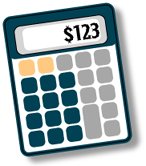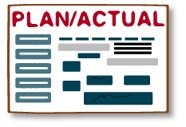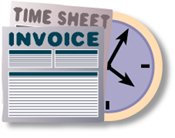 In a previous article we went into detail about what Revenue Recognition is and why it is necessary.
In a previous article we went into detail about what Revenue Recognition is and why it is necessary.
At a practical level what are the common methods of recognising revenue and how can this be achieved from an administrative perspective?
In the previous article mentioned above we stated that:
“Revenue is to be recognised over the period in which the services were performed. This is fairly straightforward for services provided on a Time and Material basis.”
“When a project involves delivery of a product that has required services to develop the product, e.g. software, and the provision of services to the project can be estimated reliably, revenue associated with the project shall be recognised by reference to the stage of completion of the project at the end of the reporting period.”
See: http://www.alertit.com/Channel/index.php/revenue-recognition-is-it-really-necessary/
Common Methods for Recognising Revenue
With the above in mind what then are the common methods used for calculating and recognising revenue? Some common methods for recognising revenue are as follows:-
Hours Earned
This revenue recognition method is suitable for Time and Material projects where the vendor has agreed to provide particular services at a particular rate per hour.
In this case revenue is recognised on each hour earned. It is possible that a number of rates are quoted and charged dependent on the type of service and, or skill level, of the person providing the service. In these cases revenue also needs to be recognised based on these rates and services performed.
Also it is possible that a maximum number of billable hours have been agreed with the customer. Any hours over the maximum may not be billable or revenue earning. These maximum hours may be at a project phase or task level or for the project in total.
To achieve this revenue recognition method requires timesheets to be entered and for these to have the appropriate charge rate applied to calculate revenue earned.
Project % Complete
This revenue recognition method is suitable for Fixed Price projects where clearly defined deliverables and a price have been agreed.
 At the end of each reporting period the project manager is required to assess the remaining work to complete the project. Remaining Work may then be added to Actual Work to calculate the Total Work for the project as at the end of the Reporting Period. Project % Complete is then Actual Work divided by Total Work.
At the end of each reporting period the project manager is required to assess the remaining work to complete the project. Remaining Work may then be added to Actual Work to calculate the Total Work for the project as at the end of the Reporting Period. Project % Complete is then Actual Work divided by Total Work.
As at end of reporting period:
Actual Work – 180 hours
Remaining Work – 60 hours
Total Work – 240 hours
Project % Complete is calculated as:
Actual Work (180 hours) / Total Work (240 hours) = 75% Complete
If total Project Revenue is $48,000 then Revenue Earned as at the end of the Reporting Period is $36,000.
Note that this is Revenue Earned up to the end of the Reporting Period. The total amount of revenue earned as at the end of the prior reporting period must be deducted from revenue earned as at the end of the current reporting period to determine the amount or revenue earned in the current reporting period.
Predetermined Amount and Time Period
This revenue recognition method is where a set and predetermined amount is being charged to provide services over a set and predetermined coverage period of time.
A good example of this could be where an IT organisation agrees to be available to provide support should it be required. The IT organisation may in fact not provide any services during the coverage period but it was available to do so if required.
In these cases the calculation of revenue earned is straightforward as it will be a set amount per each reporting period. This may even be calculated as the billing amount divided by the number of days of coverage to determine a daily revenue amount. This is then included in each reporting period based on the number of days in that reporting period.
Costs may fluctuate in each reporting period and this will affect the Gross Profit Margin in each reporting period.
Manually calculated (complex sales contracts)
The ‘Hours Earned’ and ‘Project % Complete’ revenue recognition methods are relatively straightforward. In an ideal world the sales team will negotiate sale contracts with customers that are relatively simple to administer from billing and revenue recognition perspectives. This is not however always the case.
Sale contracts may be negotiated that are for example milestone or target driven and may even include penalties for late delivery. If a milestone is not achieved then perhaps there will be considerable additional work to achieve the milestone or target.
Other factors that might drive a decision to manually calculate revenue include:-
• High probability of uncollected payments
• Significant penalties if milestone or target not achieved therefore only recognise revenue once the milestone or target has been achieved
The possibilities for variations in sales contracts are endless. Where the sales contracts are complex there is really no other way other than manually calculating billings and revenue earned.
While it would be difficult for a Professional Services Automation system to automatically manage billings and revenue recognition for all manner of complex sales contracts there are some areas in which these types of systems can assist. These include:-
- Single screen view of all billings and revenue recognition calculations and entries.
- Ability to enter by customer invoice the amount of the invoice billing that is being recognised as revenue in the current and previous reporting periods. And the ability to report this across all projects and customer invoices.
- Ability to record the revenue calculation and notes in each reporting period for the project.
- Ability to enter and report ‘revenue earned but not yet billed’ as well as ‘revenue billed and not yet earned’ by invoice and project.
- Ability to view the above for the current and all prior reporting periods.
Matching Revenue to Billings
It is important to consider how revenue earned and reported is matched to billings. For example if the project is completed and there will be no more billings for the project then the revenue earned and reported must match the billings for the project.
It is easier to consider how this can be achieved by firstly categorising the revenue as follows:-
‘Revenue earned but no yet billed’
It is not possible to match ‘revenue earned but not yet billed’ to invoices because the invoices have not yet been raised.
 However at the time the project is completed, any amounts manually entered or calculated as ‘revenue earned but not yet billed’ need to be reversed or netted off to zero. This is because these are amounts entered in anticipation of being eventually billed. If all billings have been completed then there will not be any revenue earned that has not yet been billed.
However at the time the project is completed, any amounts manually entered or calculated as ‘revenue earned but not yet billed’ need to be reversed or netted off to zero. This is because these are amounts entered in anticipation of being eventually billed. If all billings have been completed then there will not be any revenue earned that has not yet been billed.
‘Revenue billed but not yet earned’
Ideally the approach here is to determine for each invoice the amount of the invoice that needs to be reported as revenue earned in the current and all prior reporting periods using one of the methods described above. The difference between this and the total invoice amount is reported as ‘revenue billed but not yet earned’ as at the end of the current period.
This ‘revenue billed but not yet earned’ amount is a liability and needs to be included in the organisations balance sheet as such. Auditors will be interested to see how this has been calculated and will most likely want to see these calculations by project and invoice.
Matching Costs to Revenue
The above has provided information on common methods for properly recognising revenue. Understanding revenue earned is however of little use unless we also know what costs were incurred to earn that revenue. At the end of the day it is the Gross Profit Margin (revenue earned less costs incurred) that is most important.
Ideally the organisation will have in place a Professional Service Automation system that calculates, where possible, the costs incurred to earn the revenue being recognised. Typically the bulk of service projects costs are comprised of direct labour costs. The usual method for recording these is timesheets.
A good Professional Services Automation system will automatically cost these timesheets and record these costs against the service projects. These same timesheets should then be used to calculate revenue. Doing this provides a sound basis for calculating and matching costs to revenue.
Should labour be contracted from an external supplier then a good approach is to also have these contractors’ record timesheets in the Professional Services Automation system so that these are treated in the same manner as timesheets from employees within the organisation.
It is also possible that some costs will be provided on a Fixed Price or some other basis. Previously we discussed managing ‘complex sale contracts’ and in this situation we are looking at ‘complex supply contracts’. The same approaches used for calculating ‘revenue earned’ then need to be applied to calculating ‘costs incurred’ for complex supply contracts.
A good Professional Service Automation system will provide the tools you need to manage project costs and provide visibility over revenue earned and costs incurred by project, customer, supplier and reporting period.
Please contact sales@AlertIT.com for more information on how the Alert – Professional Services Automation system can assist your organisation to more easily and more effectively manage billings, revenues and costs.
